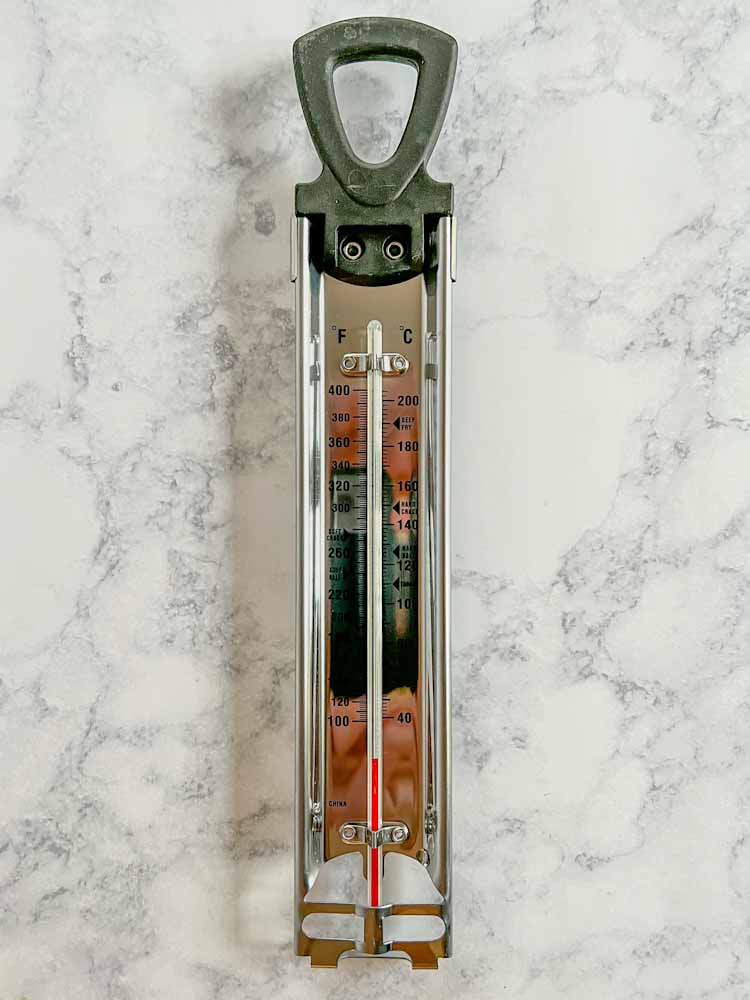
Lately, I’ve gotten into making candy with my kids. I figure if they’re going to keep asking for sweets, I might as well put them to work and make it ourselves. And while I’m at it, why not introduce my kids to classic flavors from my childhood? For this recipe, we’re adding Kool-aid.
What’s been surprising going down the rabbit hole of candy-making was how easy it is to make lollipops. With lollipop molds and a good candy thermometer (neither very expensive), it took no time. What is more surprising is how amazing they taste. It was honestly better than anything I could have bought at the store. And if I’m being really honest, I’m pretty sure I’ve eaten more of these Kool-aid lollipops than my kids.
Ingredients
- 1 Cup sugar
- 1/2 cup light corn syrup
- 1/4 cup water
- 2 Packets Kool-Aid (unsweetened mix)
Equipment
Lollipop Mold:
There are a number of these on Amazon that are pretty cheap (around $10-15). This recipe will make about 24 lollipops, so I recommend getting something that comes with at least 2 molds that make 12 lollipops per mold.
I bought this set from Amazon. It’s made from silicone so you can skip spraying the molds with cooking spray. It comes with two molds and two packages of lollipop sticks.
Lollipop Sticks:
If you buy the set above, you’re good for a couple batches. Otherwise order some lollipop sticks from Amazon (something like this) or check out your local craft store. 4 inch sticks are long enough. 6 inch sticks are great for cakepops but look a little too long (in my opinion) for lollipops.
Candy Thermometer:
There are a couple kinds of candy thermometers on the market. The first kind is the super cheap one that’s made of all glass. For the longest time, I used to use this, mostly because I’m cheap. You can get it on Amazon for under $10.
I’m really glad mine broke (otherwise I would have included a photo). It was hard to read and over time the clip didn’t hold the thermometer very well. The whole thing kept sliding, the tip would touch the bottom of the pan, and I kept getting false readings.
This forced me to get the next step up (let’s be honest though, it’s still hardly breaking the bank). This one has a traditional analog thermometer but it’s in a metal casing. I love this thermometer. It’s taller, so it’s much easier to read. It also has a metal bottom, so you can clip it to the pot and let the bottom of the thermometer sit on the bottom of the pot without affecting the temperature reading. This one goes for around $10-15 dollars on Amazon.
You can also go the all digital route. I personally have not tried these. You can get one on Amazon for as little as $25. My only hesitation is the same issue I had with the all glass thermometer. If the tip of the probe is touching the bottom of the pan, you’re going to get a false reading.
If you’re thinking about using the infrared/laser gun thermometer, don’t (at least not for candy. Otherwise I love this tool). The temperature at the top of boiling sugar is not necessarily the same as it is in the middle. And since we need to measure temperature pretty darn accurately with candy, stick with a candy thermometer.
Directions
- Prepare the molds by setting the lollipop sticks.
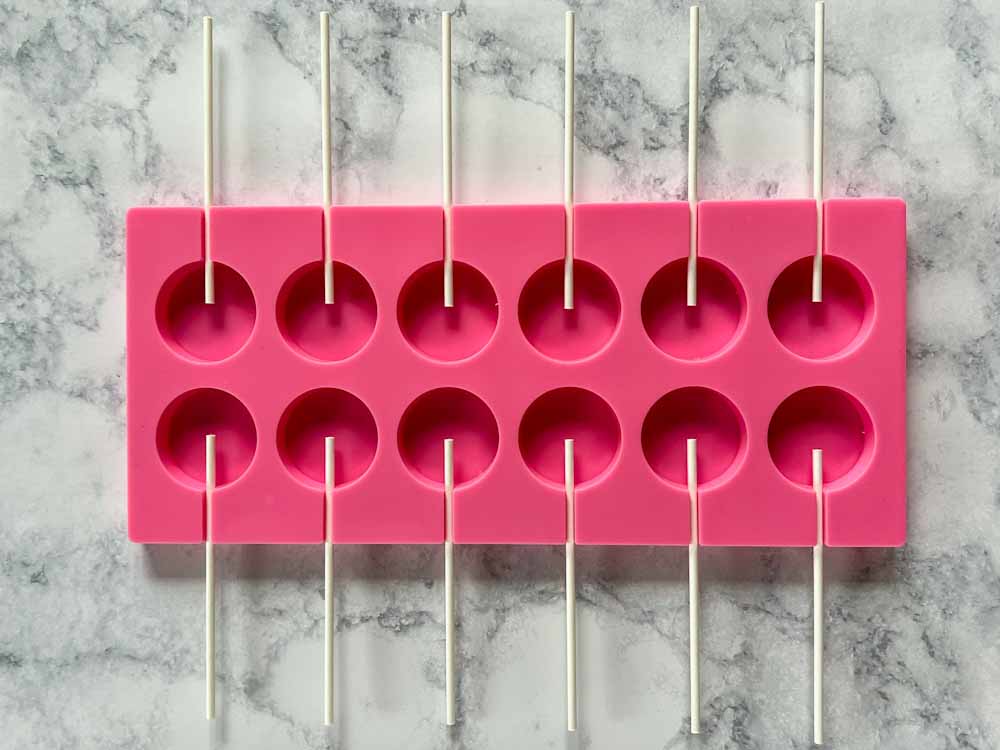
- Stir together sugar, corn syrup, and water in a medium saucepan over medium-high heat.

- Stir the sugar until it dissolves completely. Use a wet pasty brush to wipe down any sugar crystals from the sides of the pan.
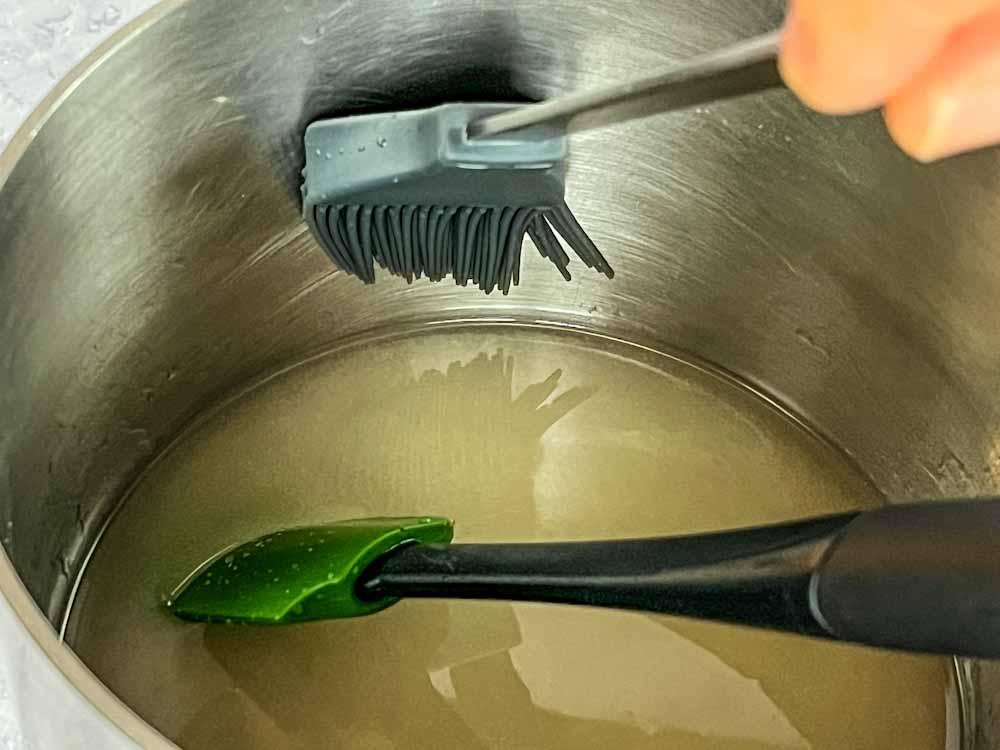
- Once the sugar mixture begins to boil, add the candy thermometer. Let the mixture boil without stirring until it reaches 300º F (the hard crack stage).
DadStuff Note: Boiling sugar is like napalm. Please be careful when handling hot sugar. Keep all helpers and little hands away!
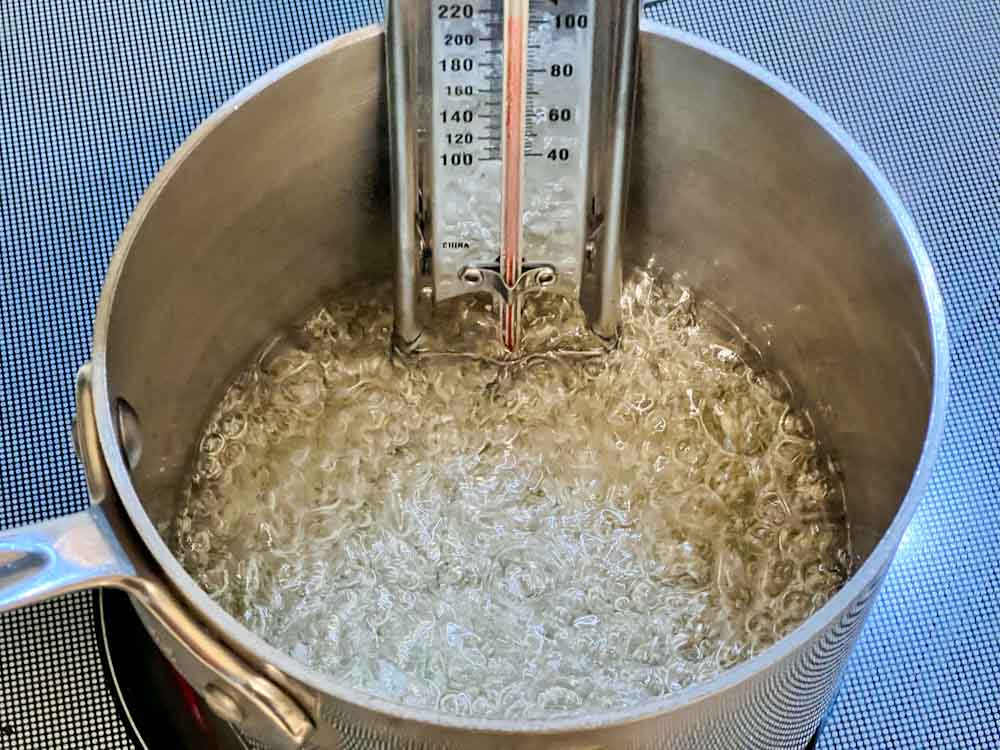
- Remove the pan from the heat. Let the sugar mixture cool to 270º F before stirring in a package of Kool-Aid until it’s completely mixed (if you put in the Kool-Aid any sooner, it will burn the citric acid, losing any delicious acidity and leaving a burned flavor).
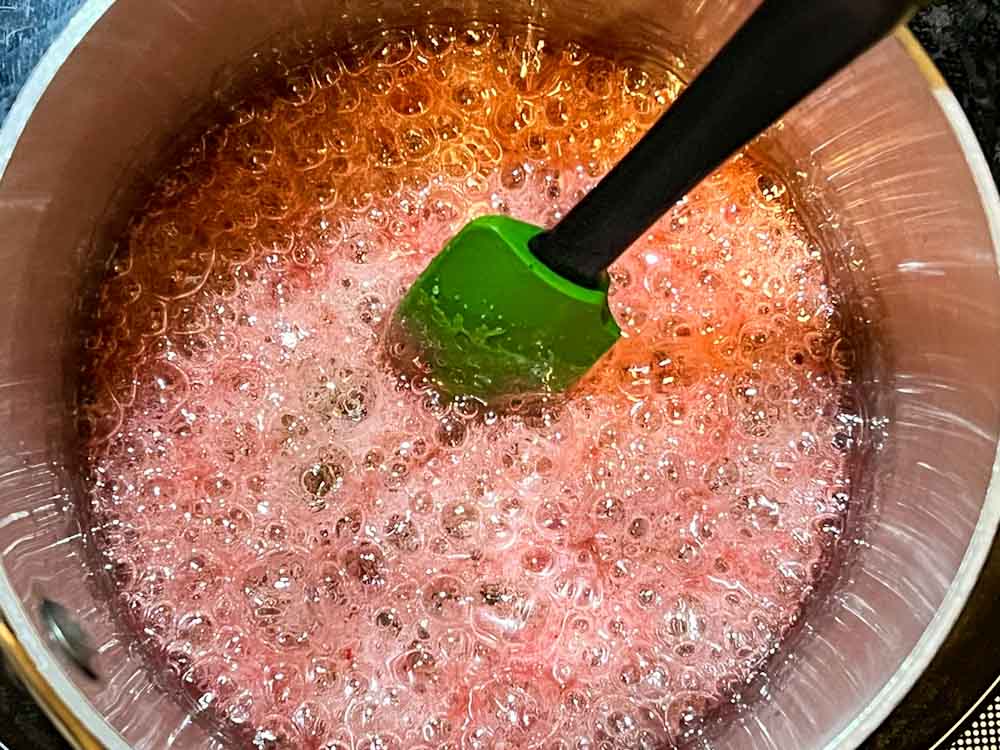
- Spoon or ladle the hot candy mixture into the prepared lollipop molds (make sure you cover both sides of the stick). Because you need to let the sugar mixture cool to prevent burning, you’ll need to move pretty quickly at this stage. If the mixture is getting too thick, put the saucepan back on the burner over a low temperature to reheat and soften it.
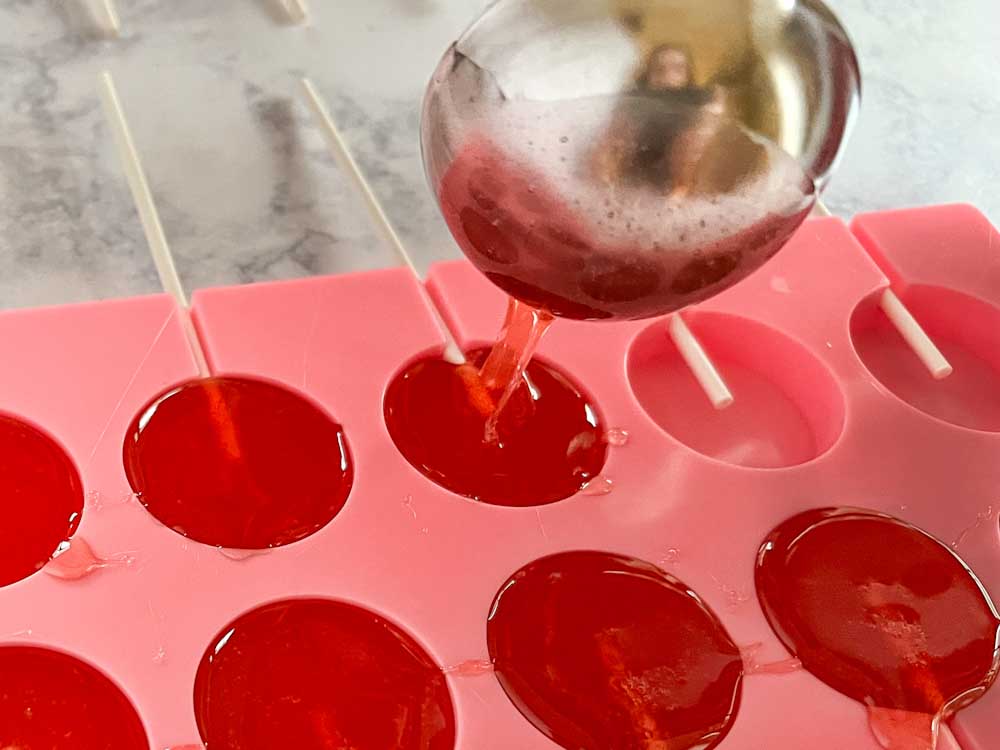
- Let the candy cool and harden completely. Remove from the lollipop molds and enjoy!
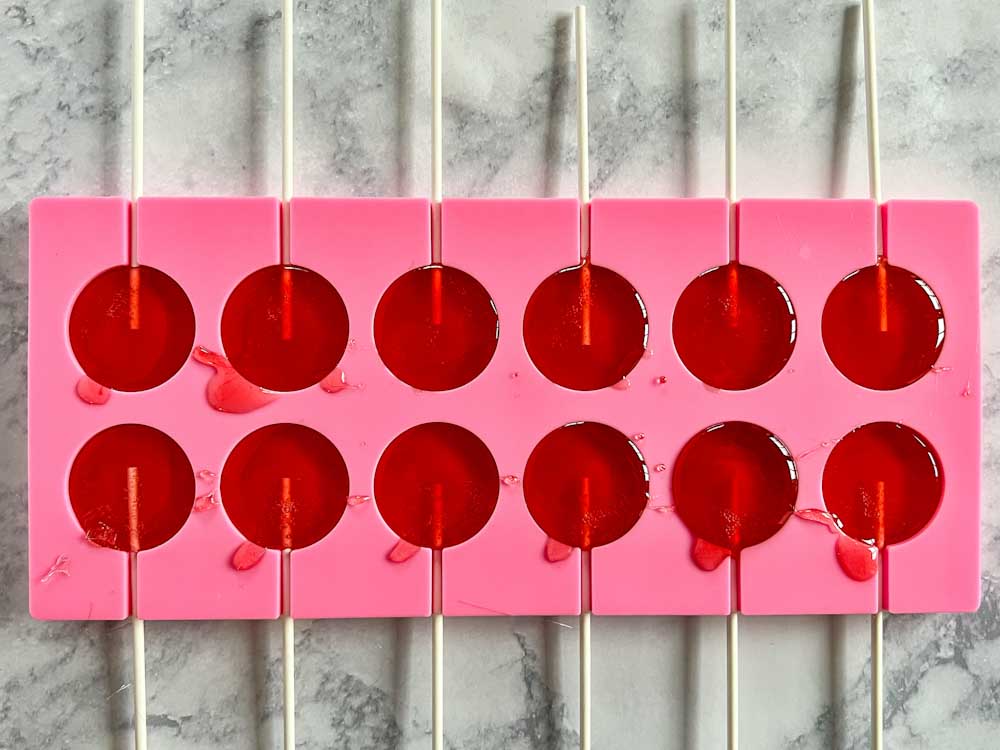
Tips and Variations
Storage
To store your Kool-aid lollipops, you can either buy some fancy plastic wrappers or store them in an airtight storage container. I recommend placing a piece of plastic wrap (either cellophane or a storage bag) between layers of lollipops. The candy can will stick together if they make contact. It’s likely to be stickier in humid climates.
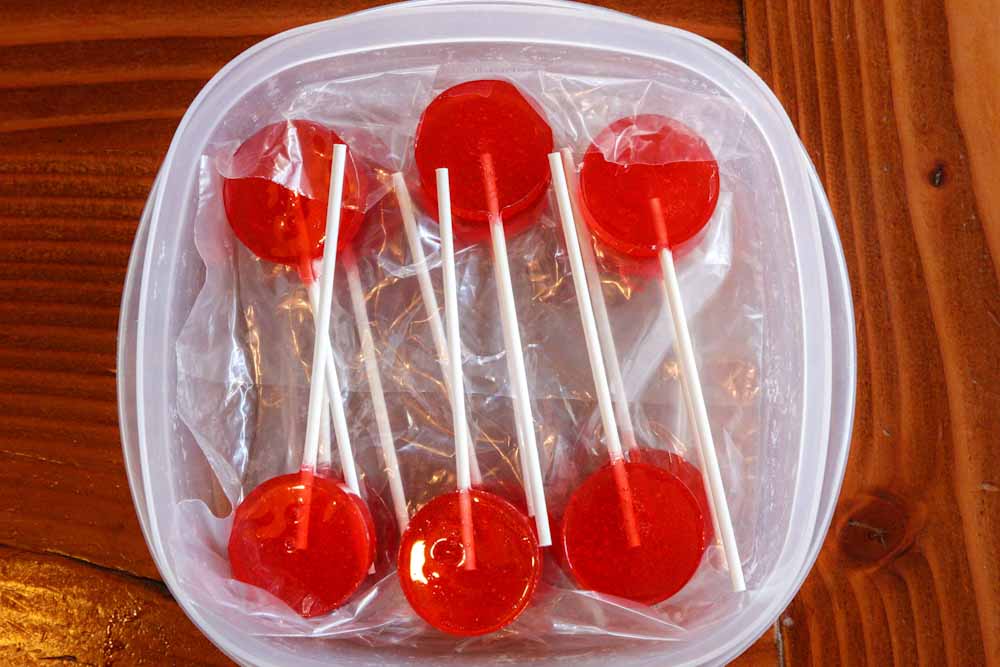
You do not need to refrigerate or freeze your lollipops. When stored in an airtight container, homemade lollipops should last a couple of months.
Bigger Flavor
If you want more flavor (or maybe you want something sourer), use a third package of Kool-Aid mix. One of the things I learned during my Kool-Aid recipe experiments is you can usually add another package of the mix without it tasting like it’s too much.
If you want something sourer, mix a regular flavor with a package of unsweetened Kool-Aid lemonade. If you’re a big fan of Sonic, mix together a package of cherry and limeade. An old college roommate taught me you can mix just about any Kool-Aide flavor with Kool-Aide lemonade or limeade (one of the many life lessons I learned in college).
Why did my lollipops taste burned?
If your lollipops taste burned, you most likely burned the citric acid (a major ingredient in Kool-Aid). Citric acid will burn if you mix it into boiling sugar. After bringing sugar to the Hard Crack stage (300º F), let it cool to 270º F or less before mixing in Kool-Aid (or citric acid).
Related Posts
It's the weekend and in my house, that means family movie night. It also means I get to lighten up on the diet (I have let my dad-bod get away from me). So instead of making regular popcorn, I...
I can’t help but want to share the favorite parts of my childhood with my kids. I’m quite proud of the fact that my youngest’s favorite books are Garfield and Calvin and Hobbes. Pretty soon it...


